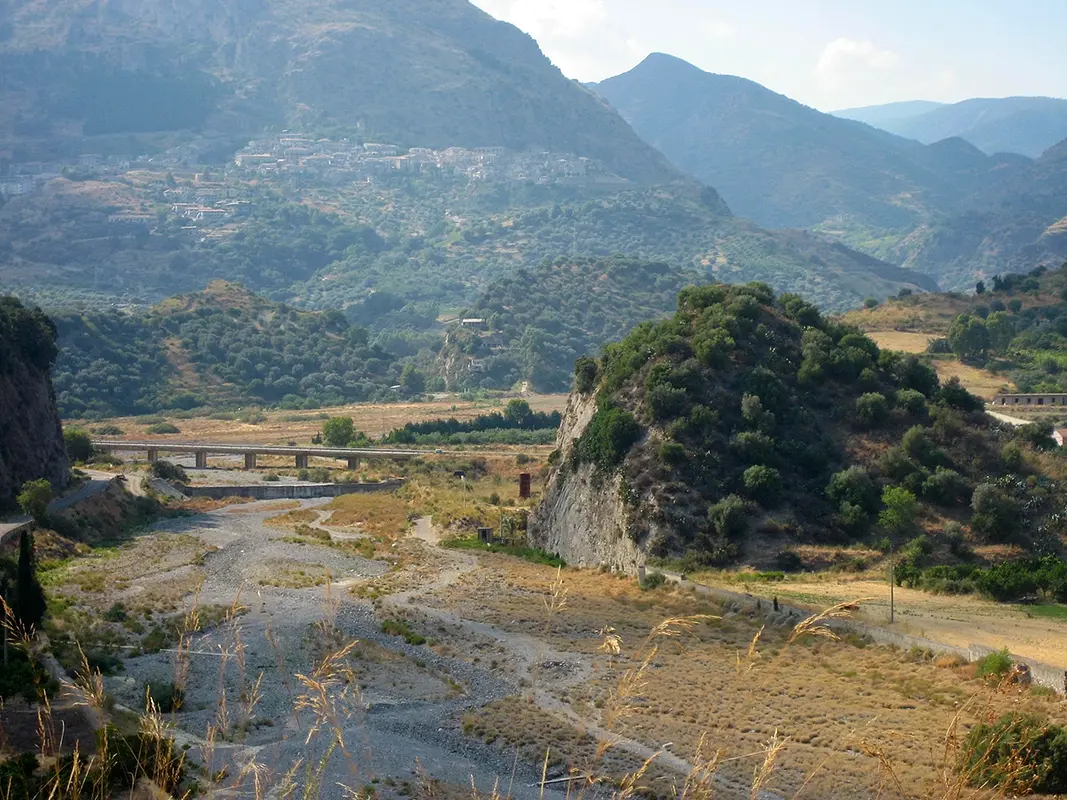











The Stilaro River
From tumultuous torrent to broad fiumara, this is the becoming of one of the Serre's most historically rich waterways



Where

One of the most picturesque valleys of the Serre
The Stilaro, among the most important watercourses of Ionian Calabria, begins its descent at the sight of Mount Pecoraro (m 1423), the apex peak of the Serre, and continues it in a winding way bypassing Mount Mammicomito (m 1047), Stella (m 832) and Consolino (m 701) through the territories of Stilo, from which it takes its name, Bivongi and Pazzano. In the upper part it flows through oak forests and chestnut fruit groves, collecting the waters of numerous tributaries that descend within valleys punctuated by picturesque waterfalls. Approaching the sea, the Stilaro takes on the typical breadth of the rivers, going inconto the Ionian Sea in contrada Caldarella accompanied by Mediterranean scrub between two wings of wild oleanders.
A widespread heritage of industrial archaeology
The Stilaro has been of significant importance in the local economy over the centuries, with particular reference to the mining and iron and steel activities that have long affected its basin. Evidence of this can be seen in the remains of the numerous mills, used here to grind iron ore before being sent to nearby smelters. As well as what remains of more recent hydroelectric exploitation: dams, reservoirs and power plants. And even a spa, the ancient Guida Baths, which peaked in fame between 1850 and 1950. A whole series of relevant sites of industrial archaeology, heritage of theEcomuseum of Ironworks and Foundries of Calabria, which is based in Bivongi.
One of the last strongholds of the Mediterranean trout
The Stilaro is one of the last streams that can boast the presence of the so-called Mediterranean trout (Salmo ghigii), the salmonid native to peninsular Italy, once present in streams throughout the Apennine chain, but almost everywhere supplanted by foreign trout released for sport fishing purposes. A medium-sized fish, seldom over 45-50 centimeters, with a characteristic speckled livery, the Mediterranean trout often hangs out in the pools at the foot of waterfalls, and it is from their banks that with a little shrewdness it can be observed.
Enter the Map of Italy's Undiscovered Wonders and find treasures where you least expect it... Inspire, Recommend, Share...
The Map thanks:
PSC 2014-2020 del Ministero del turismo - Avviso “Montagna Italia” - Progetto le Montagne del sole - Codice CUP J38J22000450008

In the Community
Enter the Map of Italy's Undiscovered Wonders and find treasures where you least expect it... Inspire, Recommend, Share...
Where


